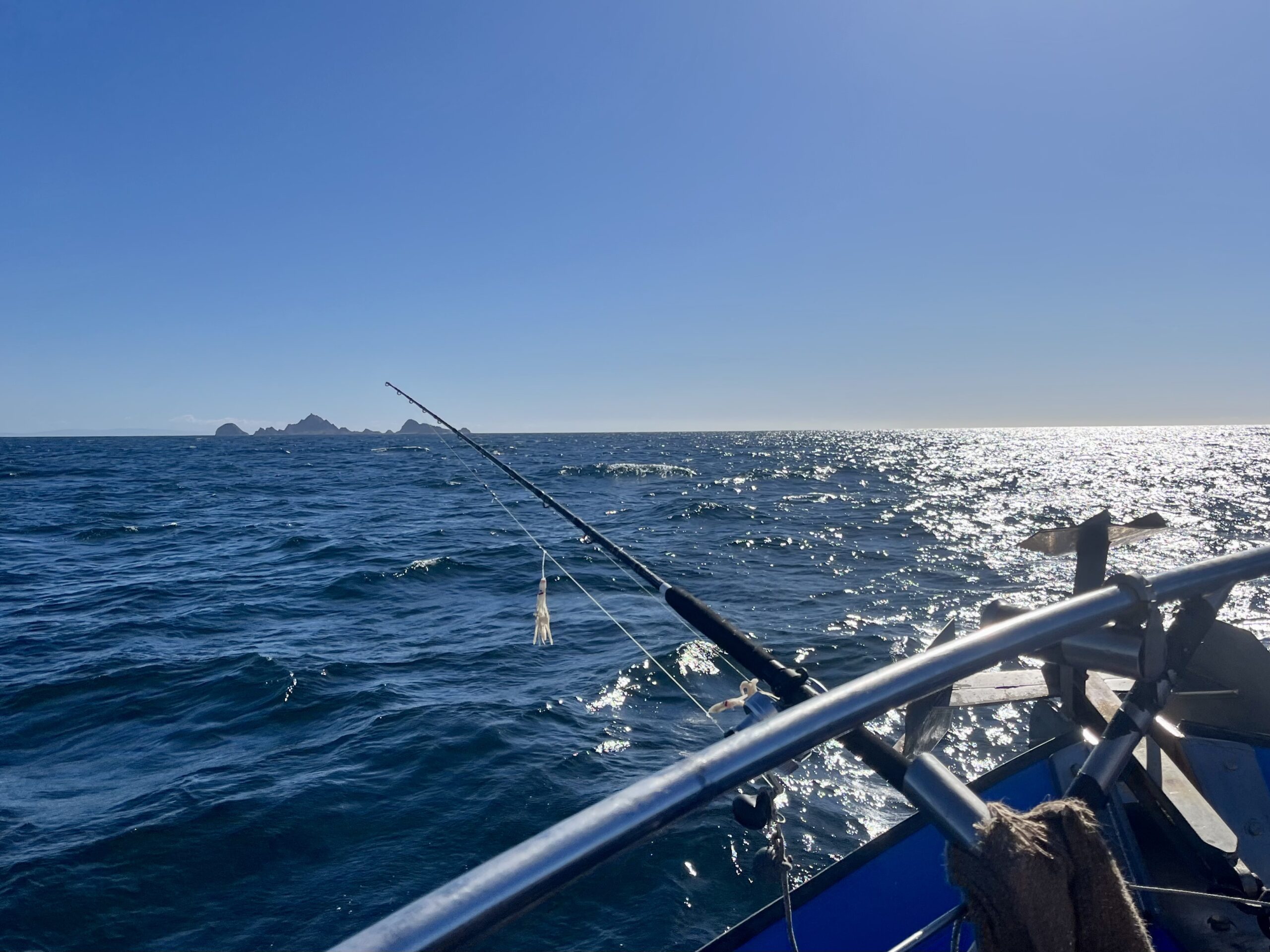It was unreal. The mysterious and wild islands in front of me made it seem like I’d warped into another world from the urban San Francisco streets where I’d started the day. But the piercing icy wind hitting my knuckles as they clutched a fishing rod made it painfully clear that this was no dream.
After living in San Francisco for five years, I got my first up-close look at the Farallon Islands. The rocks are also called the “Devil’s Teeth” or “Islands of the Dead” and now I knew why: the islets look incredibly barren and menacing.
I had joined a local fishing and crabbing trip to the islands on a chilly November morning, boating 27 miles west of Ocean Beach. Rockfish aside, my journey delivered a frontline view of San Francisco’s watery, westernmost city limits and a more on how the isles figured into Bay Area history.
A Very Early Rise
My alarm was set for 3:30 a.m. in order to make the boat’s departure from the Emeryville marina at 5 a.m. As recommended, I took two Dramamine to prevent seasickness and dizziness—one pill the night before and one in the morning—and successfully spent the day without getting seasick.
It was absolutely freezing when we motored away from the dock but the views of the city skyline sparkling in the dark kept everyone warm. Day was breaking by the time we passed under the Golden Gate Bridge.
Three hours after departure, I found myself in the middle of the sea with a sprinkle of islets dotting the water in front of me.
In Spanish, “farallon” means cliff, which matched my view: the sharp and steep rocks popped up from sea level with hundreds of birds resting on each one. The sky was clear, the waves were relatively mild and gentle, and it was time to fish.
Fishing Lessons
It was my first time fishing in the Pacific. I baited my hook with fresh squid, tossed it into the water and let it drop to the bottom of the sea. The deckhands told me to wait a bit and then slowly reel in the line so I could feel a tug if I got a bite.
But fishing is all about the unknown. You really never know what you have on your hook until you reel in your line. The unpredictability is all part of the fun.
If a fish was too small, we threw it back. And if it was big, all the fishermen and crew stood and cheered.
Many along for the trip were pulling up Dungeness crabs, which is one of the only ways to get them for the holidays as the commercial crabbers must wait until migratory whales leave the area.
Our fishing time went quickly. During my two hours of casting out and reeling in, I caught several decent-sized cod, and—importantly—didn’t stab myself with the hook. Not bad for a first-timer.
Another key lesson: sometimes a strong pull on your line is not a big fat fish, but a sign your line is hopelessly tangled with your friend’s.
San Francisco’s Marine Sanctuary
As the boat moved to different areas to fish, I was able to see different sides of the islets. The Farallons are actually the westernmost limit of the City and County of San Francisco. And since land in the city is extremely expensive, I started to wonder, how these islands remained undeveloped and who had inhabited them before?
The Farallons have long been a part of San Francisco’s history. Legend has it that around 450 years ago in 1579, English explorer Sir Francis Drake was the first European to visit the islands. And in 1819, a Russian fur hunter was believed to be the first one to actually live on the islands.
During the Gold Rush, the islands played a key role in supplying the city with eggs—murre eggs, actually—until Petaluma’s egg ranches took over that role.
The Greater Farallones National Marine Sanctuary was established in 1981, to protect the area’s fisheries and bird life. Commercial fishing is not allowed in the area surrounding the islets but recreational fishing boats are allowed to make day trips to the area.
Visitors can’t go ashore on the islands anymore though a small group of scientists and researchers often stay on the South Island. Non-fisherpeople can see the islands too, on the many whale and birdwatching trips that leave from Bay Area harbors.
The entire trip was incredible—from the views, to the history lesson and, of course, the fishing.
One of the best parts? For an extra $20, the crew will clean and filet your catch before you get back to the dock.
How to Join a Fishing Boat to the Farallons: This trip was arranged through the Wah Ying Social Club and cost $230. The club organizes a few fishing trips every year. Numerous fishing charters head out from San Francisco, Emeryville, Sausalito, Half Moon Bay and Bodega Bay every weekend. Don’t forget to purchase a one-day fishing license for $17 from the California Department of Fish and Wildlife before you go. The Oceanic Society also organizes naturalist-guided bird- and whale-watching excursions to the Farallons. Landlubbers can learn more at the marine sanctuary’s visitor center in Crissy Field.
